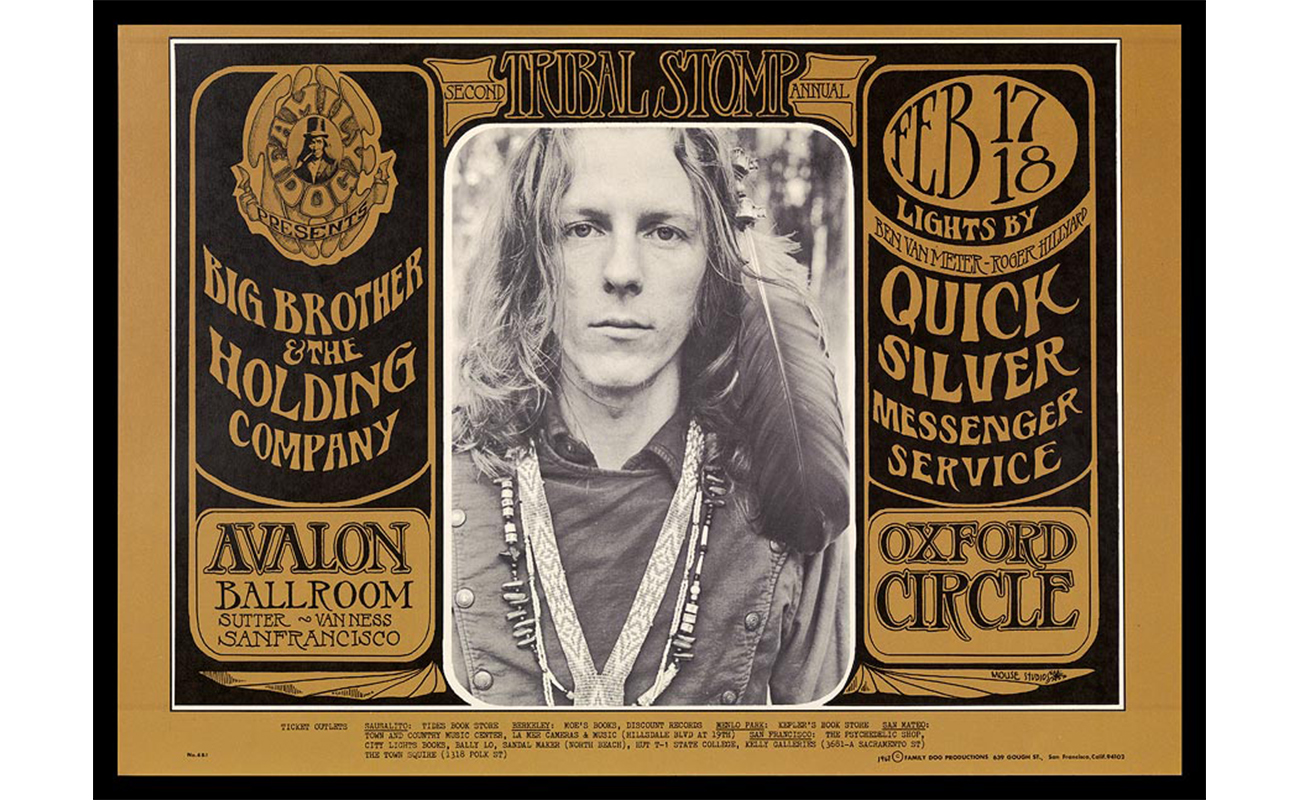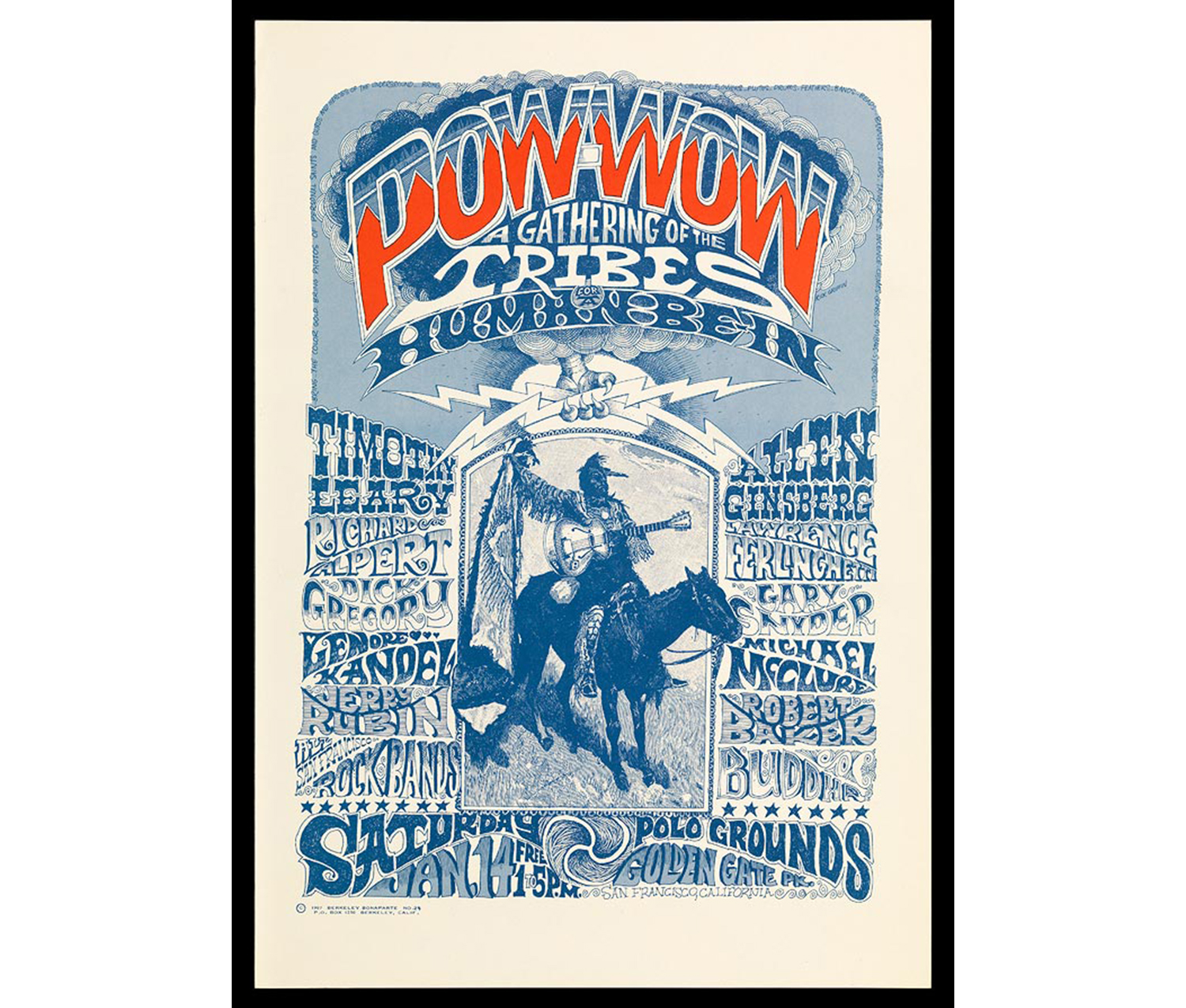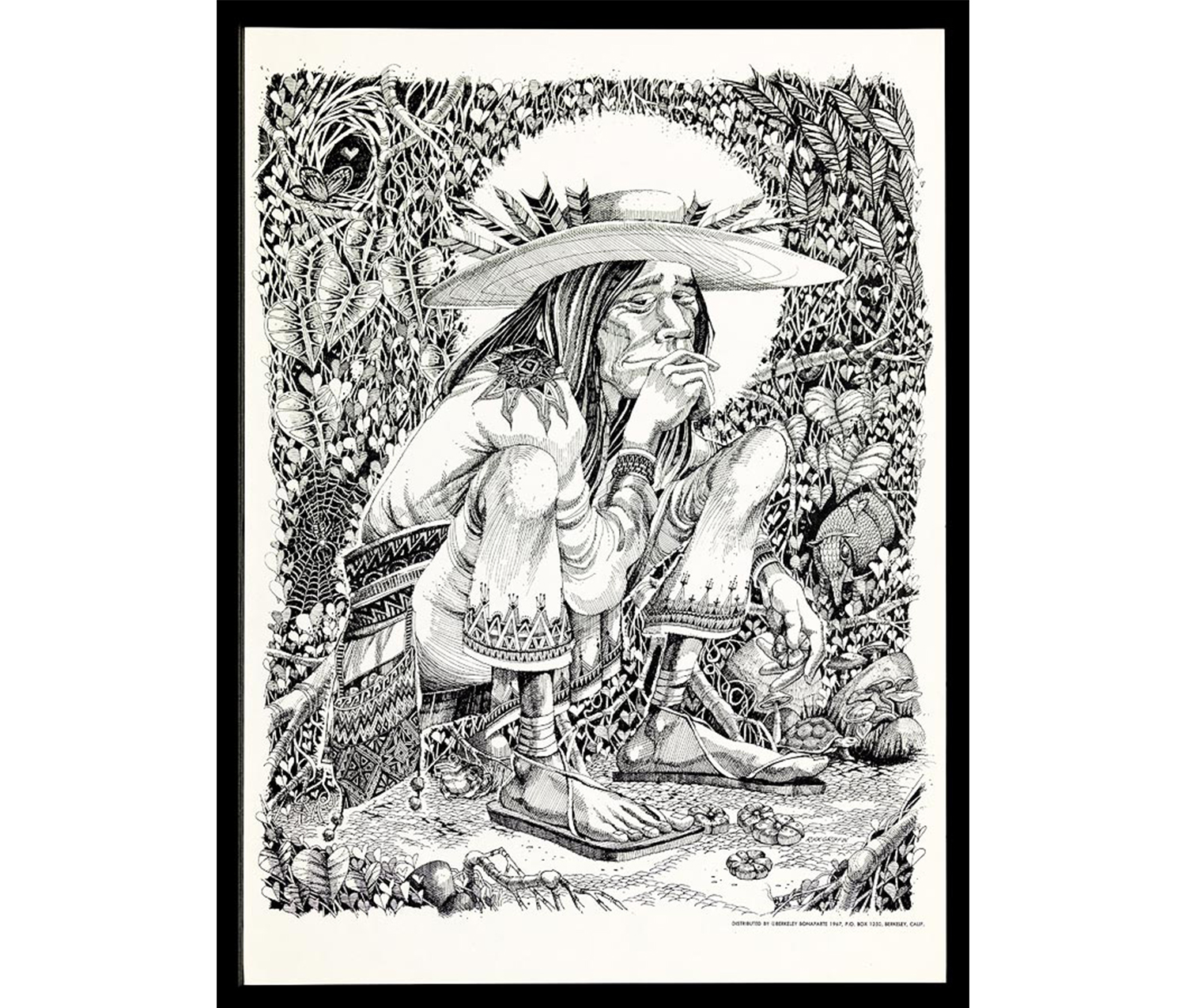
Native American Tribe Culture in Psychedelic Art
Guest blogger Emma Casey is a Smith College student, class of 2015, majoring in Spanish. She is the 2011-2013 STRIDE Scholar in the Cunningham Center for Prints, Drawings, and Photographs.
In my research for the current exhibition Summer of Love: Psychedelic Posters from the SCMA Collection, I came across an interesting undertone motivating counterculturists in 1960s America: tribe culture. The disaffection of these typically white, affluent youth was evident in hostility towards organization, industrial-era technology, and the monotonous suburban lives of their parents’ generation. They tended to embody their rebellion by means of an imagined traditional Native American tribe society. They started communes and adopted a tribal identity that was in a sense falsely honorary and misleading. The 1960s communes glorified Native American life and negated their long history of societal discrimination and racism.

Rick Griffin. American, 1944–1991. PowWow: A Gathering of the Tribes, 1967. Lithograph printed in blue and red on paper. Purchased. Photograph by Petegorsky/Gipe. SC 2011.38.47.
Native imagery was also adopted into the art world, and is used in several posters in the collection, promoting human be-ins and rock concerts. These elements are explicitly represented in Rick Griffin’s 1967 poster PowWow: A Gathering of the Tribes(pictured above), advertising the ‘Human Be-In’ held in Golden Gate Park, San Francisco on January 14th, 1967, which attracted over 20,000 attendees. This event fused literary figures (Allen Ginsberg), advocates of consciousness-expanding drugs (Timothy Leary), and popular musicians with the general public to take a stand against recently implemented drug legislation and discontent with US involvement in the Vietnam War. The scale of organization required of this event showed a shared commitment to consciousness both at a personal and larger, political level. I’m not sure how well the Native American man riding the horse illustrates this goal of reclaiming America for the collective good, as it excludes the population it’s portraying.
The graphic posters are eye-catching, and encourage an impressive level of spiritual collectivism, but I think that the images’ socio-historical implications should be kept in mind.

Rick Griffin. American, 1946–1991. Untitled, 1967. Screenprint printed in black on paper. Purchased. Photograph by Petegorsky/Gipe. SC 2011.38.46.
Want to learn more about Summer of Love before it closes on September 15th? Come to SCMA's Second Friday event tomorrow to hear a Gallery talk by Steve Waksman, Associate Professor of Music and American Studies at Smith College and dedicated scholar of rock and pop.